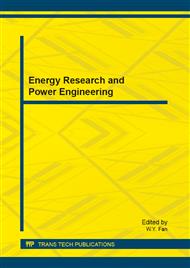p.1303
p.1308
p.1313
p.1317
p.1326
p.1330
p.1334
p.1338
p.1342
The Application of Digital Simulation Technology in Ship Power System
Abstract:
This paper described the ship power system digital simulation technology is object-oriented simulation technology, it adopts the modular design and layered structure, among them, the modular design to enhance the simulation agility and scalability, and hierarchical structure is in reducing modeling workload at the same time greatly improve the simulation efficiency. Therefore, this technology in the ship power system digital simulation field has high practical value and broad application prospect.
Info:
Periodical:
Pages:
1326-1329
Citation:
Online since:
July 2013
Authors:
Price:
Сopyright:
© 2013 Trans Tech Publications Ltd. All Rights Reserved
Share:
Citation:


